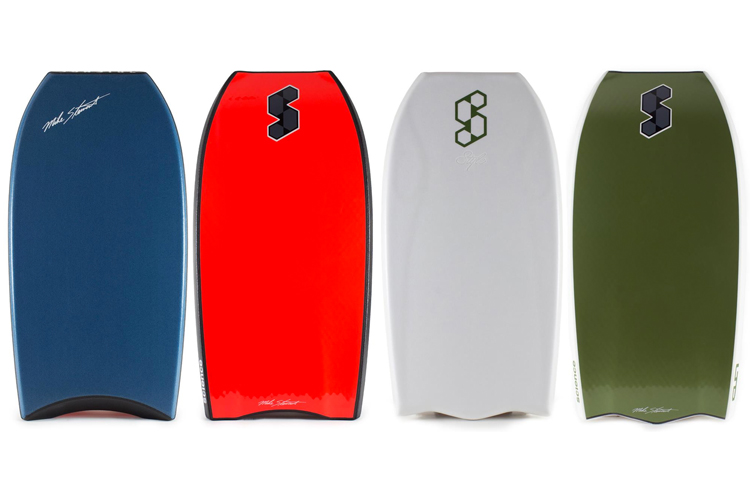There's a lot of science behind a bodyboard, and there will always be various kinds of boards for different types of waves and riders. Tails are one of the most important features of a bodyboard.
Surf shops often showcase dozens of bodyboards, and sometimes, they all look too identical.
However, if you observe closely, you'll find that there are two main types of tails: crescent and bat tails.
But how do tails work?
Bodyboards don't have fins, so the tail area is responsible for stabilizing the board in the most critical moments and maneuvers - 360s, carving turns, airs, etc.
The tail area features two channels.
These two canals increase the board's adherence to the face of the wave, for example, when you're performing the bottom turn.
Without these channels, the board would become very unstable.
It is also important to keep in mind that bodyboards with a large tail width are difficult to control and make maneuvers harder to pull.
On the other hand, narrow tails may compromise flotation, speed, and tricks that require knee work over the board's bottom.
The Crescent Tail
The square tail was Tom Morey's first choice when he designed the world's first bodyboard, but the early models evolved quickly.
The crescent tail is naturally more comfortable because it adapts to your belly and body shape.
Additionally, the crescent tail has less contact with the face of the wave and increases the bodyboard's fluidity, especially in barreling, close-out, or shore break conditions.
A bodyboard with a crescent tail is always looser and will respond quickly to abrupt decisions.
Drop-knee riders prefer this tail formula, but the crescent tail is still by far the most popular bodyboard tail design in the world.
Some brands also market bodyboards with a subtle variation called the clipped crescent tail.
The Bat Tail
The bat tail was designed in the late 1990s by the legendary, nine-time world bodyboarding champion Mike Stewart.
The first bat tail model was introduced by Custom X. It resembles a bat and offers a wider foam area and an increased overall volume.
Stewart wanted a tail shape that could have increased contact with the face of the wave.
That is precisely what you need when you land an ARS and backflip or when you spin.
Bat tail bodyboards are usually only used by prone riders. A few bodyboard manufacturers also sell another version named flat bat tail.
There is no best or worst tail. It depends on your riding style and your personal preferences.
However, if you're a beginner or intermediate rider, you will hardly notice any difference between a bodyboard with a crescent tail and a bodyboard with a bat tail.
If you're unsure about which tail to choose, try them before you make up your mind.
Ask your local surf shop owner to test-drive both tail types in mushy and hollow waves and pick the one you feel comfortable with.
Do you need a new bodyboard?
